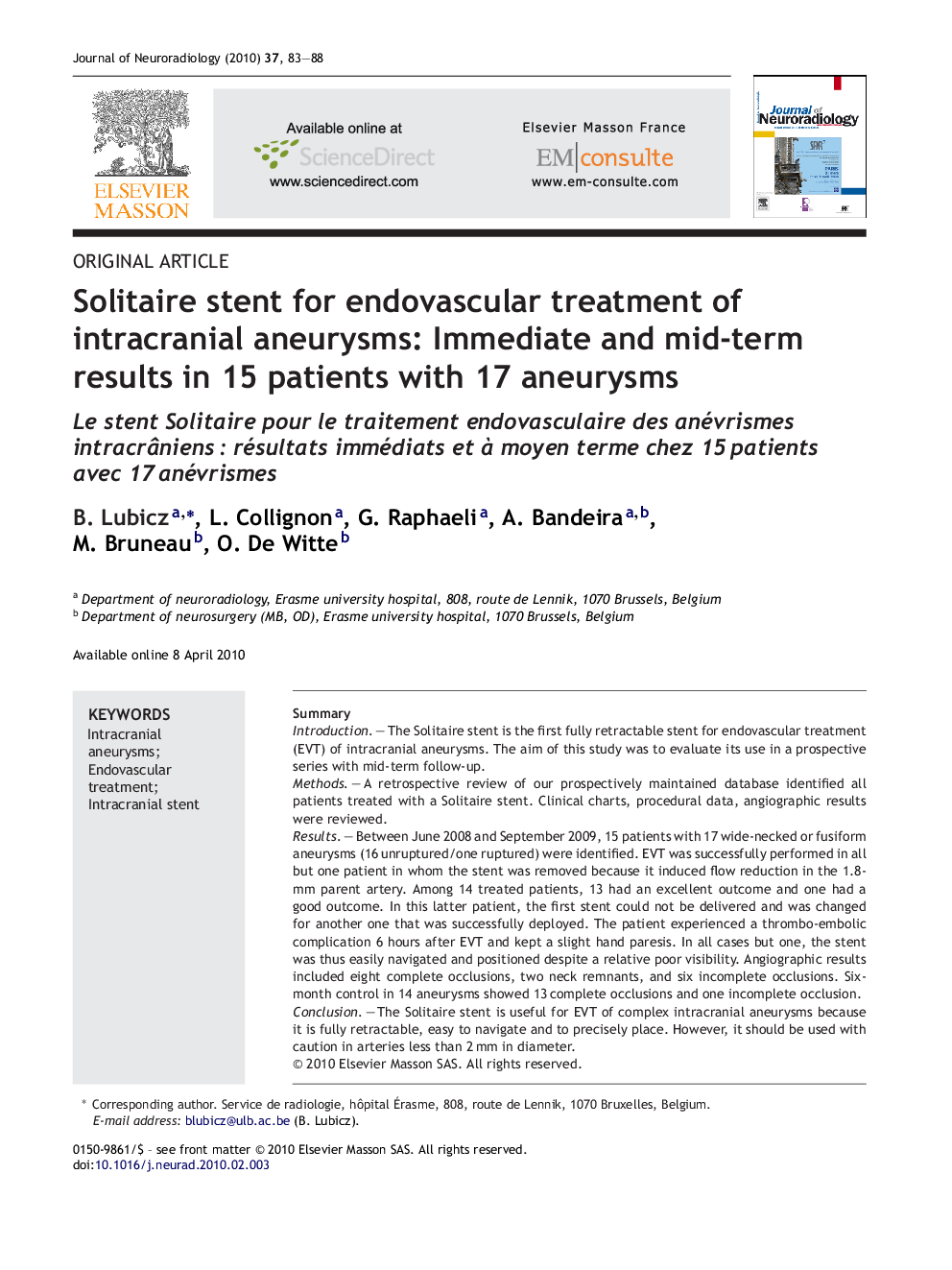| Article ID | Journal | Published Year | Pages | File Type |
|---|---|---|---|---|
| 4234226 | Journal of Neuroradiology | 2010 | 6 Pages |
SummaryIntroductionThe Solitaire stent is the first fully retractable stent for endovascular treatment (EVT) of intracranial aneurysms. The aim of this study was to evaluate its use in a prospective series with mid-term follow-up.MethodsA retrospective review of our prospectively maintained database identified all patients treated with a Solitaire stent. Clinical charts, procedural data, angiographic results were reviewed.ResultsBetween June 2008 and September 2009, 15 patients with 17 wide-necked or fusiform aneurysms (16 unruptured/one ruptured) were identified. EVT was successfully performed in all but one patient in whom the stent was removed because it induced flow reduction in the 1.8-mm parent artery. Among 14 treated patients, 13 had an excellent outcome and one had a good outcome. In this latter patient, the first stent could not be delivered and was changed for another one that was successfully deployed. The patient experienced a thrombo-embolic complication 6 hours after EVT and kept a slight hand paresis. In all cases but one, the stent was thus easily navigated and positioned despite a relative poor visibility. Angiographic results included eight complete occlusions, two neck remnants, and six incomplete occlusions. Six-month control in 14 aneurysms showed 13 complete occlusions and one incomplete occlusion.ConclusionThe Solitaire stent is useful for EVT of complex intracranial aneurysms because it is fully retractable, easy to navigate and to precisely place. However, it should be used with caution in arteries less than 2 mm in diameter.
